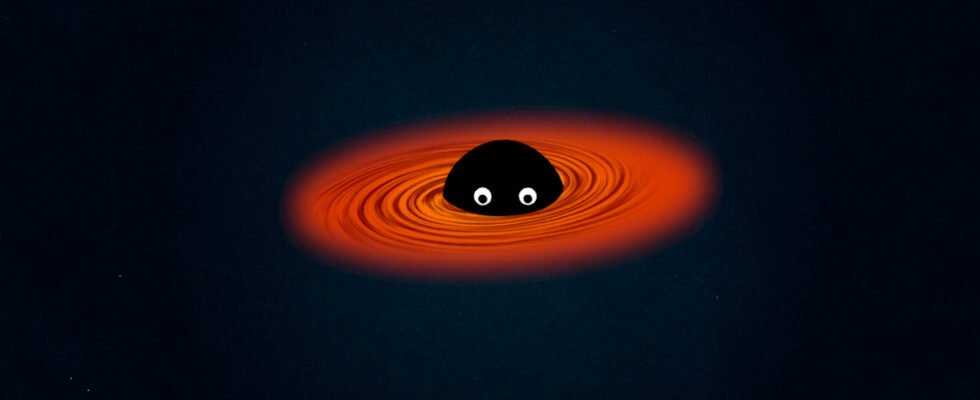Black holes are optically invisible, but that does not prevent them from being studied. Scientists have several options for spotting these giants playing hide and seek in space.
They are everywhere, yet you never see them. There are 40,000,000,000,000,000,000 black holes in the Universe (40 billion billion), according to an estimate published at the start of 2022. Small or large, voracious or quiet, black holes are fascinating. Their gravitational field is so strong that no matter entering a black hole can come out. Including light: that’s why black holes are… black. They are optically invisible.
But if no one can see them, how do we know they exist? How can scientists study them and learn so much about them? There is nothing magical about that, as NASA explains well: Scientists can see how strong gravity affects stars and gas around black hole “. In other words, we can use the effects caused by the black hole on its immediate environment to study it, even if we cannot see it.
X-rays emitted through space
” When a black hole and a star are close to each other, high-energy light is produced. This type of light cannot be seen with human eyes “, completes NASA. The matter of the star, torn apart due to the attraction exerted by the black hole, notably emits X-rays through space (and the interest of X-rays is that they penetrate even better through gas and dust than “normal” light). Fortunately, scientists now have at their disposal telescopes, especially space ones, capable of detecting this light – such as the Chandra X-ray observatory.
This is not only valid when an unlucky star passes a little too close to a black hole. We can also see effects when a black hole crosses a cloud of interstellar matter, for example: there too, it attracts matter towards itself.
This phenomenon of agglomeration of matter is known asaccretion. Matter drawn to a black hole collects in an accretion disk, where it is heated to millions of degrees (and glows in X-rays). This material is close to the event horizon, which somehow marks the “boundary” of the black hole (beyond this limit, no return possible).
Using the “signature” of a black hole
We can also learn more about a black hole by using a spectroscope (an instrument for studying light): that of Hubble can for example help to estimate the speed of a gas swirling around a black hole. This speed is indeed considered as the “signature” of the black hole: by obtaining it, we can then calculate the mass of the black hole. This is how we know that the central black hole of the galaxy M87, located 50 million light-years away, is 3 billion times the mass of the Sun – the black hole whose image was presented in 2019.
Finally, we can cite another very useful way to learn more about black holes without seeing them: gravitational waves. Their existence was only just demonstrated in 2015, but this method of detecting black holes is making rapid progress. Thanks to these minute disturbances in spacetime, astronomers are now able to record cataclysmic events: encounters between black holes.
